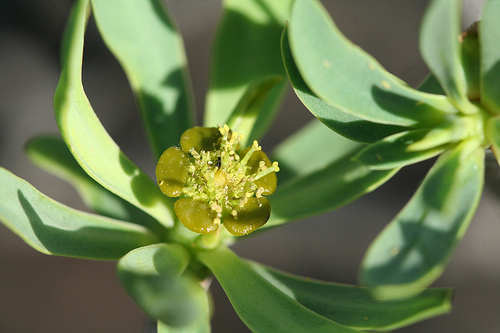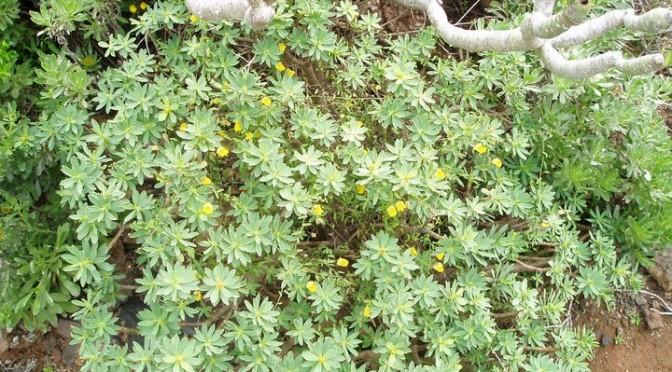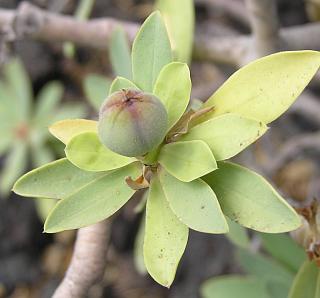We continue writing about Lobos Islet, since we love to present the wonders of the Canary archipelago, especially this islet where we go regularly on our trips from Corralejo.
This time we will dedicate the article to talk about a very characteristic species of flora in this islet. Out of over 130 plant species living in this islet nowadays, we will talk about the sweet spurge (Euphorbia balsamifera), very characteristic of the Canary Islands and a symbol, particularly in the island of Lanzarote, which stands out in the islet with magnificent specimens. Remember that the jewel of the flora in Lobos is The Evergreen, endemic to this island, of which we have already discussed in another article that we recommend.

Spurge
In the Canary Islands we call Spurge to a large group of plants of the Euphorbia family. Here in Fuerteventura, we enjoy the existence of two species of spurge, sweet Spurge (Euphorbia balsamifera) and sour Spurge (Euphorbia regis-jubae). In the Islet of Lobos it’s the sweet spurge which reaches a surprising size becoming very representative of the islet and being highly appreciated by visitors who accompany us on our trips from Corralejo. It is endemic to the Canary Islands and North Africa. Especially we see it in the lower and drier areas of the islands.
Description
It is a rounded shrub that can grow up to 2 meters; with grey stems highly branched from the base and rugged, as they are exposed to the wind. It is a “succulent” plant because its stem and root allow storage of water in much higher amounts than the rest of the plants, keeping their water for long periods, which allows them to survive in dry and arid environments. It has rounded shape with branches that have small green leaves which they lose in dry periods but which recover when the rains start again; This is a mechanism that prevents water loss during periods of harsh sun. It is just at this time of the year -autumn and winter, especially in days like the last ones, when the rain has cheered our island up, that we can enjoy their flowers. Small yellow flowers that form a unique reddish fruit which looks like knitted (tripartite structure).
Curiosities
In the chronicles of the ancient conquerors they spoke about the milk from these plants found in Fuerteventura “… trees that exude a medicinal milk …” and which has been employed for many uses throughout history. uses: As traditional fishing method (embroscar) that involves spilling the “cerote” (juice of the plant) into natural pools which can be seen during the low tide, and where fish were trapped; This juice has poisonous properties that lulled the fish and made it easier to catch them with shovels. -The Milky sap of the branches coagulates on contact with air to forms a kind of gum, and it’s said to have a nice flavour. This paste could be chewed to strengthen the gums; it was also used to wean kids, by sticking it to the udders of the goats; other uses, in times of extreme scarcity, could be as glue traps for birds. Among its medicinal uses, it treated colds in the shape of poultices; pricks of thorns, warts or wounds, by applying it straight on the skin.
All these uses, together with the appearance of lime kilns in Fuerteventura, made this sap become more scarce, since it was also used as fuel. Currently the population of this plant is abundant and these days we can enjoy its green leaves, which have sprouted with the first rains. We invite you to come to Lobos in one of our trips from Corralejo to enjoy the magnitude of these plants, loved by the ancients for their properties and characteristics of the Canary Islands and specifically of this islet that we love so much.
FuerteCharter Team

